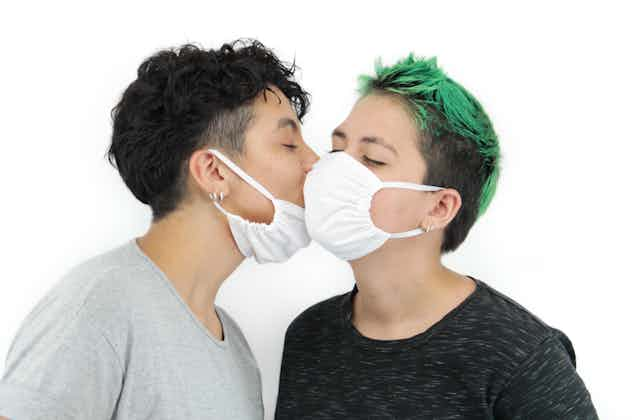Urgent issues face queer and trans people everywhere, including LGBT suicide, the continued practice of conversion therapy, HIV burden, an epidemic of violence against trans women of colour and poor mental and physical health compared to straight and cis people.
In 1981, a former social worker named Virginia Brooks coined the sexual minority stress theory. Brooks’ work explained why such health disparities exist. In the process, Brooks revolutionized the way we think about queer and trans people, rejecting cultural notions that being queer or trans is pathological, the result of a traumatic past or something negative in people’s lives.
And yet, Brooks’ life and work has gone largely unrecognized. As a social epidemiologist and PhD candidate in the school of population and public health at the University of British Columbia, I work primarily in HIV and health inequities for LGBT populations.
Though my work often relies on minority stress theory, I was unaware of Brooks’ scholarship until about a year ago. Uncovering Brooks’ story led me on quite the journey — tracking down Brooks’ family, old friends and even her doctoral supervisor from the 1970s.
Published in 1981, Brooks’ Minority Stress and Lesbian Women showed how exposure to cultural, social and economic stressors translates into psychological and biophysical stress for LGBT people. Going through experiences like homophobia, employment discrimination and lack of civil rights, to name a few, cumulatively over time translates into poor health.
The theory laid the groundwork for the burgeoning field of sexual and gender minority or LGBT health over the past four decades, including its application to transgender people with the development of gender minority stress theory.
‘Gay minority’ theory and finding Virginia
Brooks came from a conservative Southern background and was largely rejected by her family for being gay. A practising social worker, she went back to grad school in her 30s and earned a doctorate from the University of California, Berkeley in 1977.
Brooks worked in the tumultuous 1970s, post-Kinsey, pre-AIDS era. And in the midst of evolving feminist, gay and civil rights movements, she was the first to apply minority stress theory to lesbian and gay populations.

Brooks conducted her study after the founding of the National Organization for Women (NOW) and recruited part of her study sample from a 1975 San Francisco NOW meeting — shortly after lesbians had been kicked out of, then allowed back into, NOW. In spite of the theoretical, computational and socio-cultural limitations of the time, Brooks conducted cutting-edge research, designing the largest and perhaps most rigorous study of lesbians at the time.
Only two previous studies conducted among lesbian women had exceeded samples of 100 participants. Brooks recruited nearly 700 women in five months for her now out of print 1981 book Minority Stress and Lesbian Women. She rejected the practice of recruiting gay and lesbian people from those who had been hospitalized in psychiatric facilities for homosexuality. She also used a high-quality sexual orientation measure based on self-reporting rather than marital status or reported “deviant” behaviour.
Citing history
Today, Brooks’ work on sexual minority stress is largely unknown, even within the LGBT health research community. It is generally attributed to Ilan Meyer who first published a study of gay men and minority stress in 1995. Brooks’ work has been cited approximately 20 times less frequently than his work in the past 30 years. It’s unfortunately not an isolated incident that work by a lesbian scholar that centres women has largely been neglected.
Demands to think about gender within the academy have fuelled vocabulary additions like manels and manferences (all male panels and conferences), moves to recognize women’s scholarship like #CiteHer and a pivotal 2018 report from the National Academies of Science, Engineering and Medicine on sexual and gender harassment in academic sciences.
A study of nearly 300,000 publications in high-impact STEM journals found that articles with men in key author positions (first or last author) were more frequently cited than articles with women in key author positions. An earlier study of honours awarded in STEM disciplines over two decades found that women were less likely to receive awards in recognition of their scholarly achievements in science, their contributions often attributed to men or otherwise overlooked, a phenomenon known as the “Matilda Effect.”
These pervasive biases also extend to the subject of research in academia. In the 20 years following Brooks’ publication, 28 per cent of LGBT health scholarly articles included lesbians versus 88 percent that included gay men.
Brooks’ legacy
It would be tough to overstate the importance of Brooks’ work and the legacy of sexual minority stress. The theory informed the landmark 2011 Institute of Medicine LGBT health report, which led to the establishment of the Sexual and Gender Minority Research Office at the National Institutes of Health (NIH) in 2016, and subsequently the designation of sexual and gender minorities as an NIH health disparity population — key steps toward LGBT health and human rights progress.

Brooks envisioned a future where achievement of LGBT health and equality would be marked by sexual orientation being considered like any other demographic variable such as age, race, ethnicity and gender in health research. She witnessed some of the movement towards progress; she changed her name to Winn Kelly Brooks in 1983 and continued a career of teaching, clinical practice and research until retiring in 2001. Following a lengthy illness, she died in 2008 in Texas at 69 years old.
Today, we are on our way to realizing that vision, with sexual orientation included in major government-funded population-representative health surveys in the United States and Canada. During Pride month, we can also celebrate, as part of Brooks’ legacy and the movement it helped grow, the U.S. Supreme Court decision that LGBT Americans are protected from employment discrimination by the 1964 Civil Rights Act — a protection the Canadian Human Rights Act has afforded lesbian and gay Canadians since 1996 and transgender Canadians since 2017.

